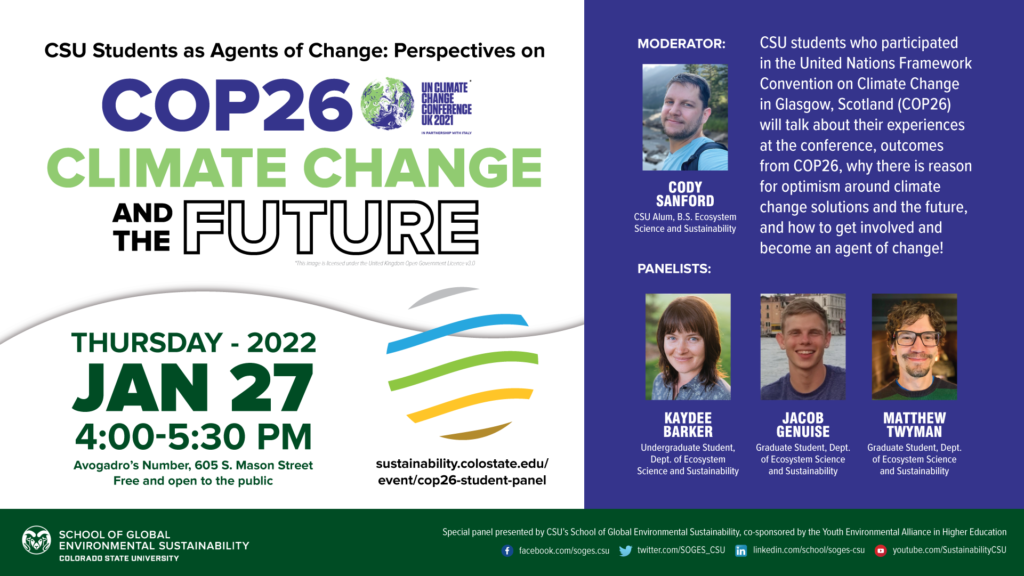I recently had the amazing opportunity to attend COP26 with the Youth Environmental Alliance in Higher Education (YEAH) Network and the Ecological Society of America (ESA). I was there to observe and learn about current science and the process of climate negotiation, and also to present with the YEAH Network about student activism fostering climate optimism. If you’re interested, you can watch our Side Event presentations Voices of Optimism and Catalyzing Communities of Future Leaders. You can also watch some recaps with a student panel (left) and ecologist panel (right) below, and go to my COP26 Navigation site to check out the talks and documents from Glasgow.
What is COP26?
The 26th annual United Nations “Conference of the Parties” to address Climate Change…
IS:
- Negotiations between countries about what to do about climate change
- A place for alliances to form or take action
- A place for people working in governments or environment to connect and share ideas
- A thermometer for world climate politics
ISN'T:
- Wholly inclusive (not EVERY nation or group of people is there)
- International law/legally binding
- Where policies are made
- The only time to pay attention to climate politics!
What goes on at COP?
1. Negotiations
National party delegates (from 120 nations for COP26) come together to decide what collectively their nations will do about climate change. It works by consensus; everything agreed upon has to be unanimous rather than majority. Documents are approved section by section, with consensus on every word and even punctuation marks.
Behind the scenes, governments form strategies, which they relay to delegates, who are then allowed to promote or accept plans on behalf of their government. This way, negotiations go from one session to the next on the basis of how much delegates were able to agree upon each session.
Some governments, often those with less political power, form alliances along common needs and goals to negotiate together at the table. Examples include the 58 nations in the Alliance of Small Island States (AOSIS) and the 55 nations in the African Union (AU).
Alliances can also form off of the UN stage to push specific initiatives. For example, the Beyond Oil and Gas Alliance (BOGA) led by Costa Rica and Denmark, has the goal of encouraging nations and even regions to make the transition from fossil fuels to renewable energy.
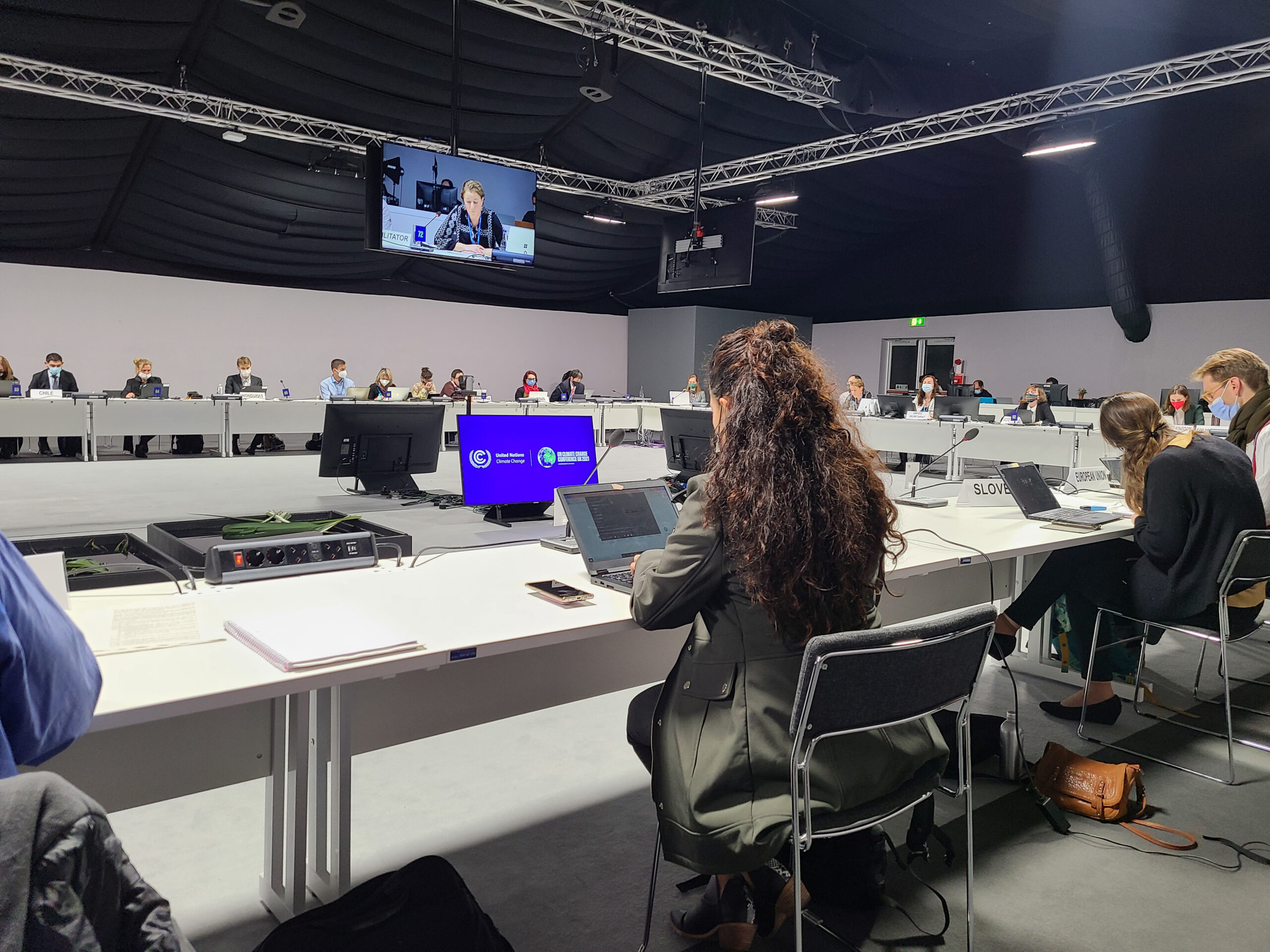
2. "Presidential" Events
There were sponsored events put forth by the UN COP Presidency, i.e. the hosting country’s appointed leader of the event. At COP26, these events followed daily themes and included motivational plenary speakers, conversations with the Intergovernmental Panel on Climate Change (IPCC) scientists, and conversations with indigenous leaders and youth leaders. You can still view many of these events on the UNFCCC Webcast Programme.
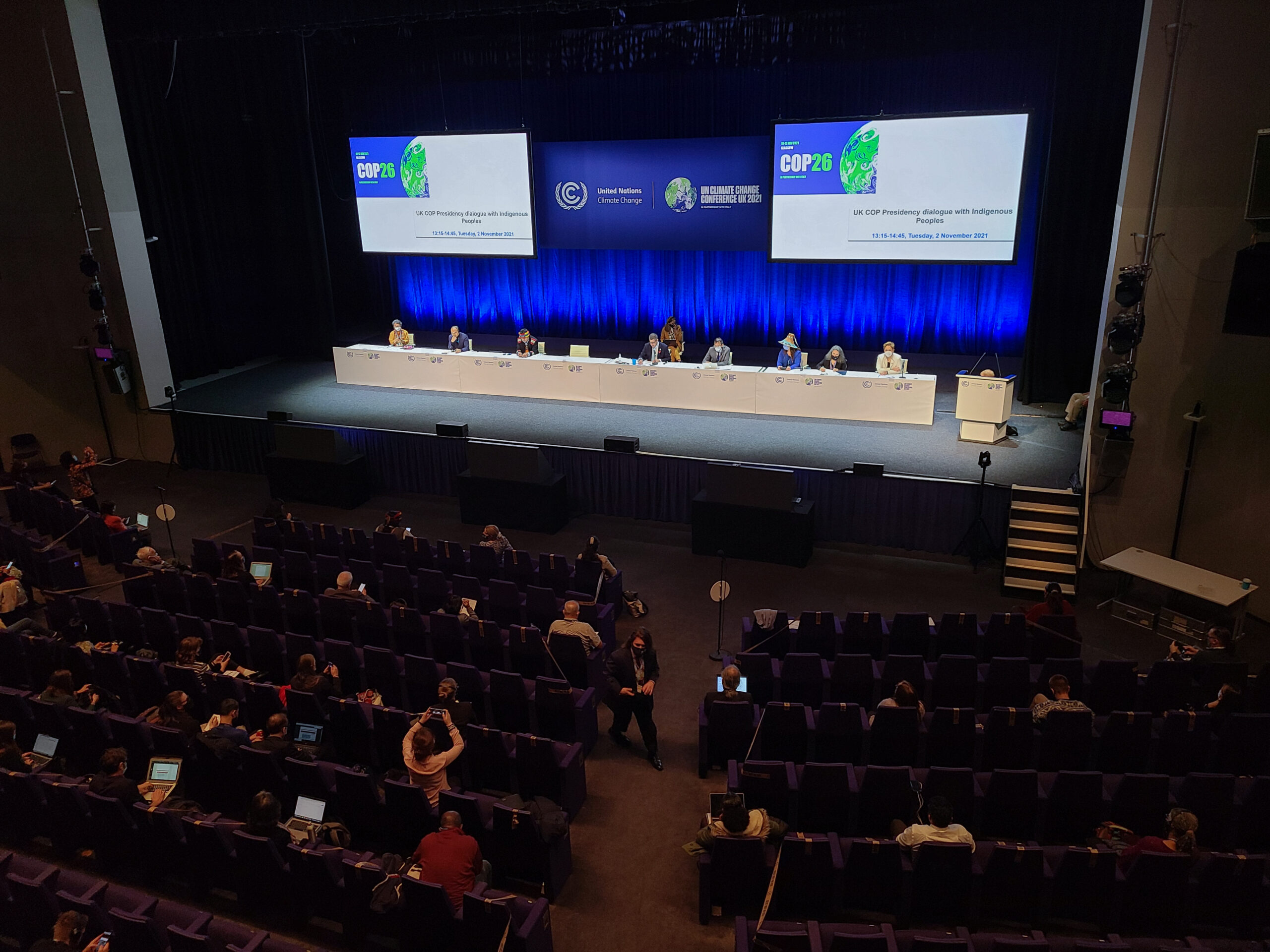
3. People (Countries and NGOs) Sharing Knowledge and Ideas
Where I spent most of my time at COP26 was in the Pavilions and Side Events. These were interactive spaces where countries and groups could share about their cultures, concerns, ideas, and current science. I saw a lot of talks with topics ranging from adaptation strategies to energy transitions to climate research. Presentations were given in English, Spanish, and French, and usually – but not always – had live translation available. Like the official events, many of these events can be viewed online. I’ve made a list of websites on my COP26 site.
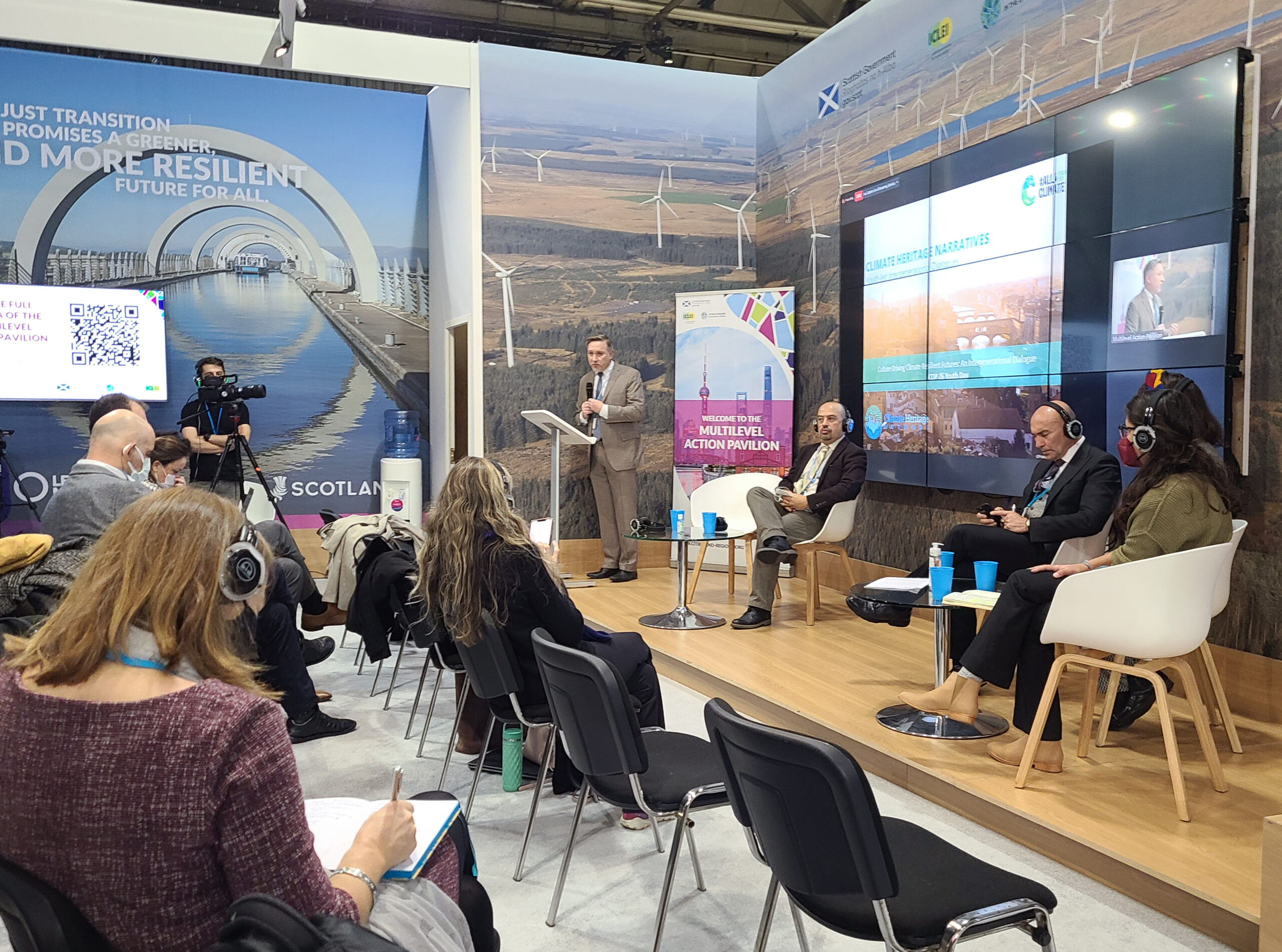
4. Protests
The protests were extremely impactful for me, demonstrating the many ways that our voices can be heard on all of the facets of climate disasters and policies. There were “approved” protests inside the conference – the UN actually recognizes protest as a valid form of civil engagement and accepted protests in the meeting space. There were many more protests outside the gates and across the city, however.
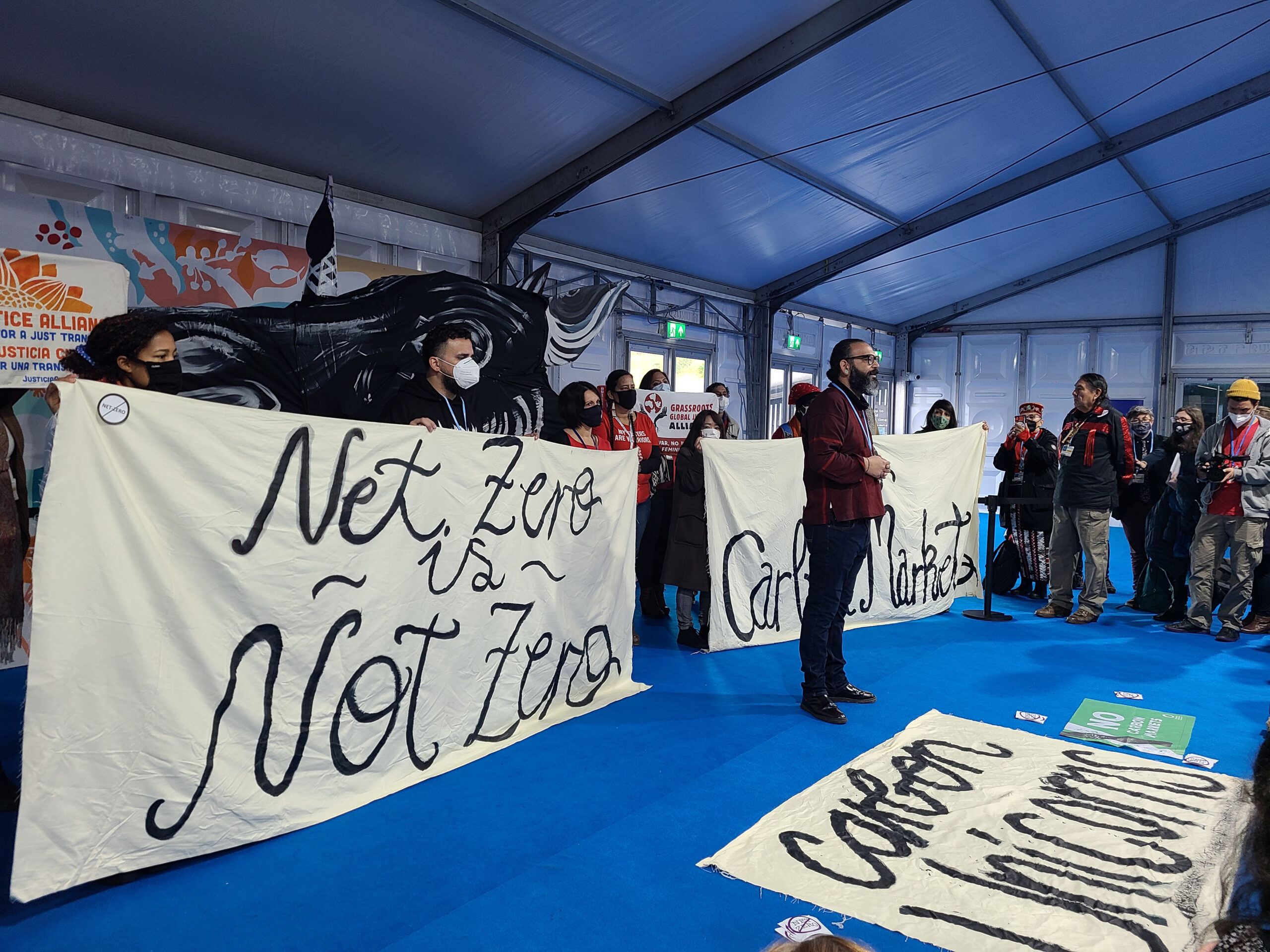
Key Outcomes and More...
It’s always difficult to break down an event like this and discern the outcomes. I honestly often only knew what was going on from summaries received later in the day or after the event altogether. Here are some of the outcomes of negotiations:
- Work programs created:
- Global Goal on Adaptation (The GlaSS) – 2 year work group
- Action for Climate Empowerment (ACE) – 10 year work group
- Mitigation ambition and implementation – work group, no time limit
- Money raised for Adaptation Finance: Least Developed Country Fund reached $600 million
- Phase-down of fossil fuels and mid-century net zero
- > 100 countries committed to reduce methane emissions by 30% by 2030
- > 100 world leaders committed to end and reverse deforestation
- Seats were added to the Climate Technology Centre and Network (CTCN) for Small Island States (SIDS), Least Developed Countries (LDCs) and Eastern Europe
- Article 6 of the Paris Agreement was finally approved with:
- voluntary cooperation
- new carbon crediting mechanism (international carbon offsets/carbon market)
- non-market approaches, including development of clean energy, adaptation, and mitigation
Thanks and hope this was a helpful page! Check out some of these resources for more:
- The Climate Pact slideshow summary from the COP26 Presidency
- The Full Glasgow Climate Pact 2021 document
- Dr. Andrew Barton’s blog The World is on Fire
- Moravian University at UNFCCC blog
- Podcast chat with Dr. Jessica O’Reilly about the IPCC Scientific Report
- COP26 Navigation site

